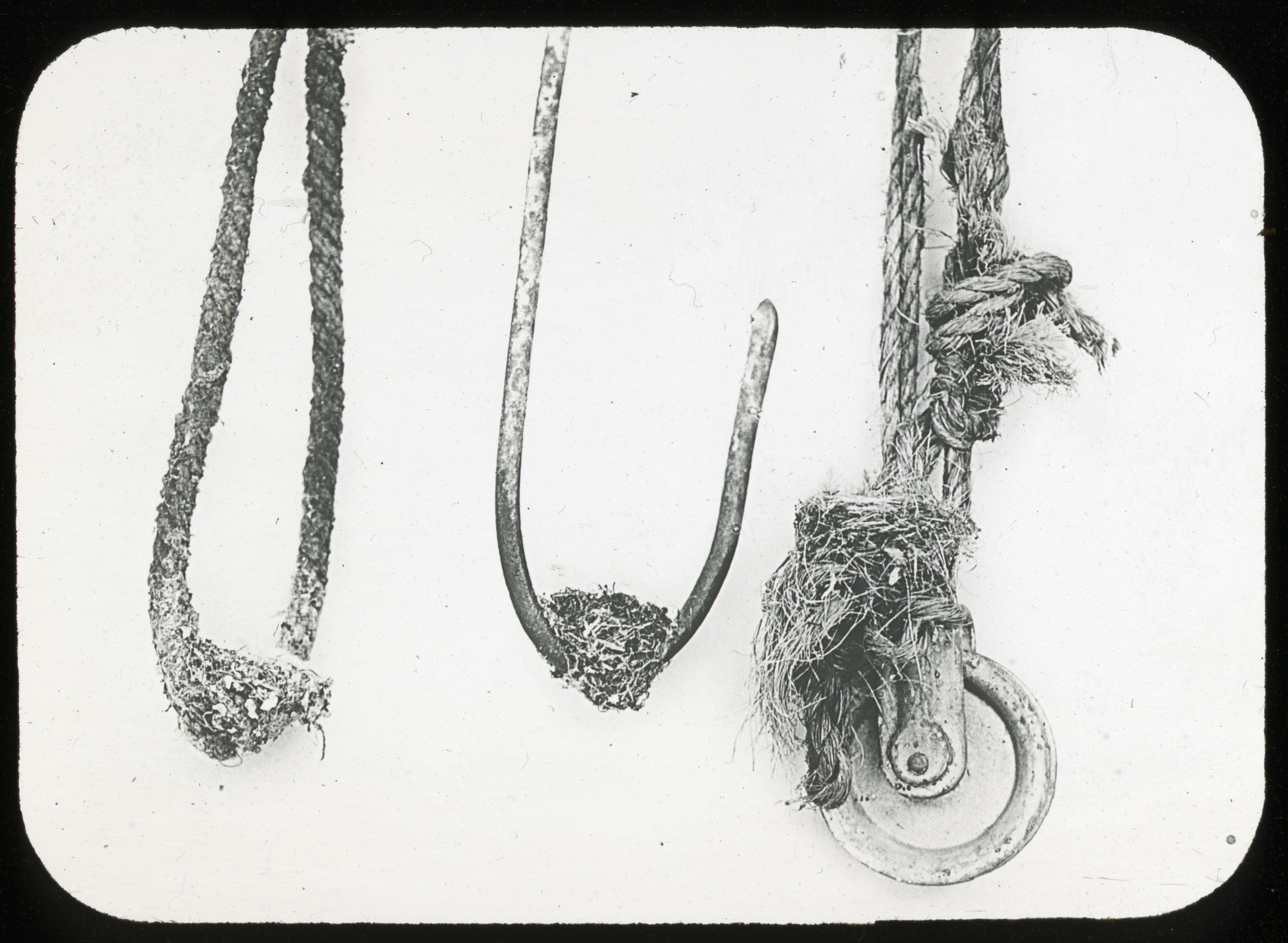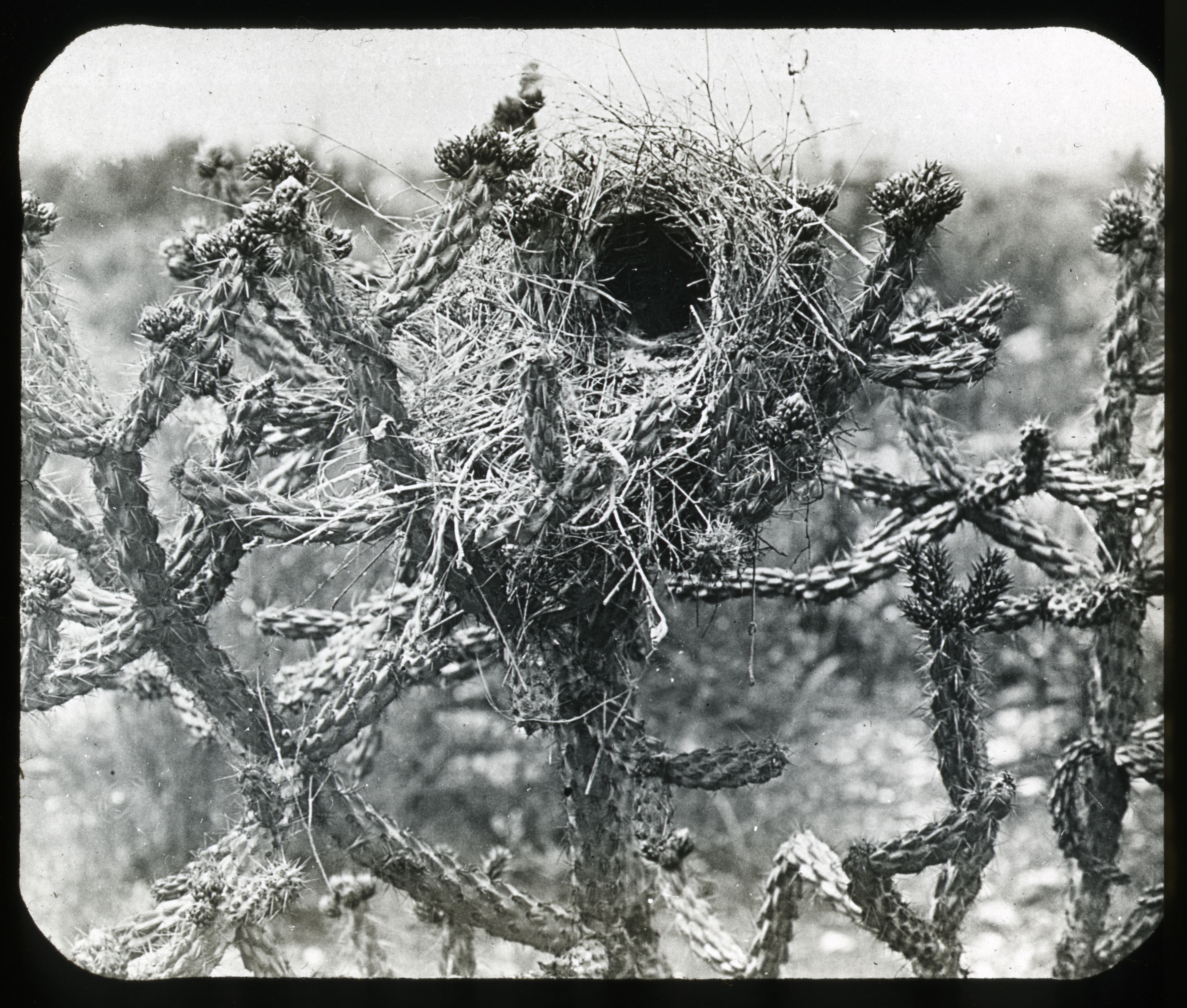Written by Alessandra J. Moyer, third year Integrative Biology major.
This semester, I’ve been working on a project to preserve a unique photographic resource that most people don’t even know exists: the lantern slide collection in the MVZ archives. Long before PowerPoint lulled its first audiences to sleep, early image projectors called “magic lanterns” allowed entertainers and educators to incorporate illustrations and, later, photographs into their presentations. Developed in the 17th century or earlier, the magic lantern used a mirror to shine light through a glass slide (called a lantern slide) onto which an image had been painted. A lens at the front of the lantern focused the image on a screen or wall. The lantern slides owned by the MVZ are from a much later period, when photographic emulsions had replaced hand-painted slides and electric lights were used instead of candles, oil lamps, and limelight. The subjects all fall under the broader category of vertebrate zoology, and include game birds, mammal bones, and reptiles.
Thus far, I have focused on the “Common Birds” collection. My task consists of cutting and folding thick archival paper into envelopes that will house each slide individually. Before this project was started, all the slides were packed tightly together in dusty old boxes. Although most of the slides are still in good condition, they are vulnerable to deterioration. The goal of the rehousing project is to ensure that they remain intact. As I label the envelopes and enclose the slides in their new acid-free, archival-grade armor, I have a chance to look at each one. Some of them show dead, prepared specimens—ventral this, dorsal that—these I glance at only briefly. But others I pause to hold up to the light. Some of these photographs capture something more than bare bones biology. In fact, one must suppose that each of these images held a great deal of significance to whoever was responsible for immortalizing them on glass. These were not two-a-penny Instagrams; thought and care must have gone into the selection of certain special negatives to become lantern slides. These would have been the images that lecturers were most excited to share with their students, the ones that could not be replaced with a thousand words. I believe that to look at these images is to have a little window into biology education at Berkeley half a century or more ago. When I make a new paper home for each slide, I feel like I’m not just saving a useful image; I also feel like I’m preserving a brittle, fragile message-in-a-bottle sent many years ago from an undergraduate zoology class somewhere in the Valley Life Sciences Building.

Extraordinary nesting sites of Allen Hummingbird, Undated, by Joseph Mailliard. Glass lantern slide, Lantern Slide #60.
A couple of my favorite bird slides are shown here. The caption on the first (right) reads, “Extraordinary nesting sites of Allen Hummingbird.” The photograph was taken by Joseph Mailliard at his family’s ranch in Marin County. It was printed in The Condor in 1913, and in the accompanying article Mailliard comments that, “The pulley on the left of the picture was used to haul up the successful results of the numerous deer hunts that took place on our ranch, the nest having been built upon it before the opening of the deer hunting season in that year (1911).” He hastens to add that the baby birds were long fledged before the pulley was again used for its intended purpose. The article can be found here:“Some Curious Nesting Places of the Allen Hummingbird.”

Cactus Wren’s nest, Undated, by W.M. Pierce. Glass lantern slide, Lantern Slide #50.
The second slide (left) is a photograph taken by W.M. Pierce, a photographer who frequently contributed to The Condor, and whose correspondence with the MVZ spans the years 1913-1930. The subject is “Cactus Wren’s nest.” If you’re curious about this nest and the bird who made it, I recommend Edmund Carroll Jaeger’s 1922 book Denizens of the Desert; a book of southwestern mammals, birds, and reptiles, where you will also find several more lovely photos by Pierce. (It’s available for free online at the Hathi Trust Digital Library.) Skip over to page 69, where Jaeger, who certainly has a taste for the dramatic, begins his account of the Cactus Wren. These birds find some protection against predators by building their nests among the spines of cacti, but apparently are not themselves troubled by the prickly needles. Jaeger wonders about this, saying, “How it happens that they can dodge the spears and daggers in which all their foes are likely to be caught, I cannot say, for never were skins or bodies more tender than theirs. Does each have a guiding spirit or have they all been dipped in the river Styx?”* I can only hope that the professor who used this slide as a lecture aid made sure to mention these hypotheses.
*It seems a bit much coming from a man who, in his preface (page viii), complains, “Writers on natural-history subjects have, in their desire to create interest and to bring their story to a fitting climax, frequently conveyed impressions concerning the behavior of animals which were false or misleading.”
Works Cited:
Mailliard, Joseph. “Some Curious Nesting Places of the Allen Hummingbird on the Rancho San Geronimo.” The Condor 15.6 (1913) : 205-207. SORA. Web. 28 Apr. 2014.
Jaeger, Edmund C. Denizens of the desert; A book of southwestern mammals, birds, and reptiles. Boston and New York: Houghton Mifflin, 1922. Hathi Trust. Web. 28 Apr. 2014.
Related Links:
A short history of lantern slides from the Library of Congress’ online archive “American Memory”: Lantern Sides: History and Manufacture
Facts about lantern slides and, more importantly, a fun coloring activity, from the UBC Botanical Garden’s online exhibit “Botany John: The Legacy of a Canadian Botanist”: Lantern Slides Factsheet and Tint some of John Davidson’s lantern slides
A couple neat blog posts from the Preservation Department at Iowa State University Library: Lost & Found: Ada Hayden Lantern Slides and Landscape Architecture Lantern Slides Digital Collection
